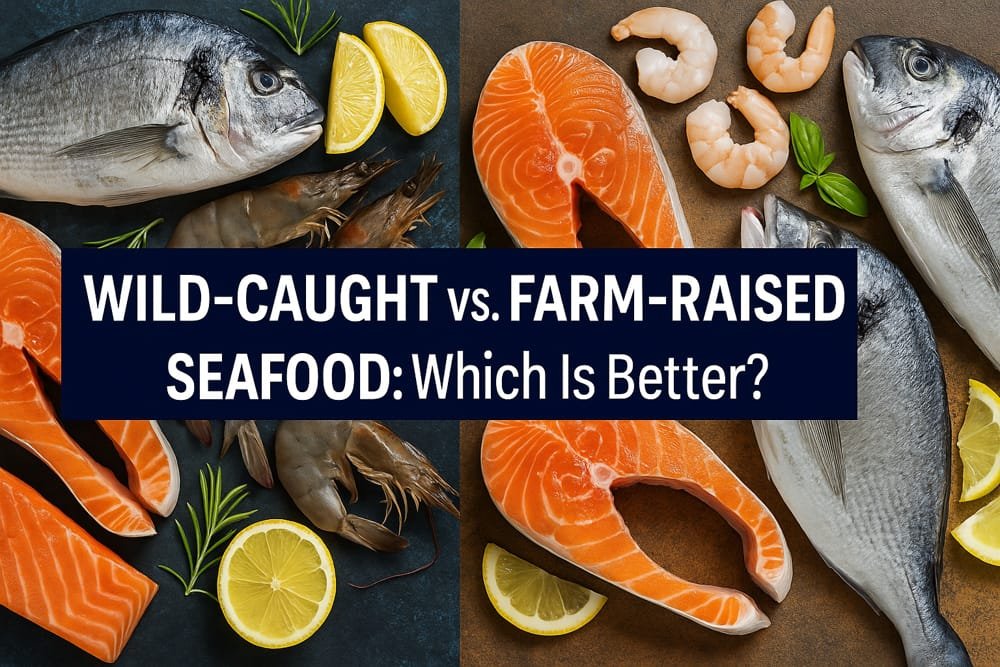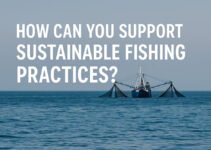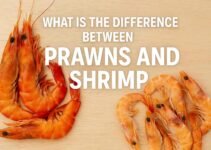Seafood plays a critical role in global nutrition, providing essential proteins, omega-3 fatty acids, and key micronutrients. However, growing concerns about environmental impact, food safety, and nutritional differences have placed a spotlight on how seafood is sourced. Today, more than 50% of the world’s seafood supply comes from aquaculture, while the rest is harvested directly from oceans, rivers, and lakes.
Consumers often wonder: “Should I choose wild-caught seafood for better quality, or is farm-raised seafood a safer and more sustainable option?” This article provides clear, data-backed answers to that question. You will learn the exact differences in harvesting methods, nutritional profiles, environmental implications, and food safety standards.
By the end of this guide, you will have the necessary information to make informed choices based on your health goals, sustainability concerns, and budget preferences—without falling for marketing myths or vague product labels.
Contents
- 1 What Does Wild-Caught Seafood Mean and How Is It Harvested?
- 2 What Is Farm-Raised Seafood and How Is It Produced?
- 3 How Do the Nutritional Profiles of Wild-Caught and Farm-Raised Seafood Differ?
- 4 Which Option Is Safer for Consumption Based on Food Safety Standards?
- 5 How Does the Environmental Impact Differ Between Wild-Caught and Farm-Raised Seafood?
- 6 Which Type of Seafood Is More Affordable and Readily Available?
- 7 How Can Consumers Verify the Sustainability of the Seafood They Buy
- 8 Should You Choose Wild-Caught or Farm-Raised Seafood for Specific Health Goals?
What Does Wild-Caught Seafood Mean and How Is It Harvested?
Wild-caught seafood is harvested directly from natural habitats such as oceans, rivers, and lakes using specific fishing techniques. This method relies on natural ecosystems without human intervention in the breeding or feeding process.
- Common Fishing Methods:
There are 4 primary fishing methods for wild-caught seafood:- Trawling: Large nets dragged across the ocean floor to collect bottom-dwelling species.
- Longlining: Baited hooks set on lines stretching over kilometers, targeting larger species like tuna.
- Purse Seining: Nets deployed in a circle to capture schooling fish such as sardines and mackerel.
- Gillnetting: Stationary nets that entangle fish by their gills, commonly used for salmon.
Is Wild-Caught Seafood Always More Sustainable?
No, wild-caught seafood is not always sustainable. Overfishing, bycatch (unintended species capture), and habitat destruction are significant environmental concerns.
- According to the FAO 2024 report, over 35% of global fish stocks are overfished, leading to ecosystem imbalances.
- Sustainable wild-caught seafood carries certifications like Marine Stewardship Council (MSC), ensuring responsible fishing practices.
Consumers should verify sustainability certifications before assuming wild-caught products are environmentally friendly.
What Is Farm-Raised Seafood and How Is It Produced?
Farm-raised seafood, also known as aquaculture, involves breeding, feeding, and harvesting seafood in controlled environments. This method supplies over half of the seafood consumed worldwide, primarily focusing on species like salmon, shrimp, tilapia, and catfish.
- Common Types of Aquaculture Systems:
There are 3 main types of aquaculture systems:- Open Net Pens or Cages: Located in natural water bodies but confined with nets.
- Pond Systems: Enclosed freshwater or saltwater ponds used for species like catfish.
- Recirculating Aquaculture Systems (RAS): Land-based tanks with water filtration systems, offering higher biosecurity.
How Do Feed and Living Conditions Affect Farm-Raised Seafood?
Feed quality and living conditions directly influence the nutritional value and safety of farm-raised seafood.
- Low-quality feed often leads to lower omega-3 fatty acid content and higher fat percentages.
- Overcrowded environments increase the risk of diseases, leading to higher antibiotic usage.
- Premium aquaculture facilities using controlled diets and clean environments produce healthier seafood with consistent nutritional profiles.
How Do the Nutritional Profiles of Wild-Caught and Farm-Raised Seafood Differ?
Wild-caught seafood generally contains higher levels of omega-3 fatty acids and lower total fat compared to farm-raised seafood. This nutritional distinction results from the natural diets and active lifestyles of wild species.
- Omega-3 Content Comparison:
- Wild salmon provides approximately 1,200–1,500 mg of omega-3 per 100 grams.
- Farm-raised salmon contains around 900–1,100 mg per 100 grams due to processed feed and limited movement.
- Fat Content:
- Farm-raised fish have up to 50% more total fat, often including unhealthy saturated fats.
- Wild-caught seafood offers leaner protein with higher nutrient density.
Are There More Contaminants in Farm-Raised or Wild-Caught Seafood?
Farm-raised seafood tends to have higher contaminant risks related to antibiotics, pesticides, and artificial additives. However, wild-caught seafood can accumulate environmental pollutants like mercury and PCBs (polychlorinated biphenyls).
- Contaminant Types by Source:
- Farm-Raised: Residual antibiotics, pesticides, synthetic coloring agents (especially in farmed salmon).
- Wild-Caught: Higher levels of heavy metals such as mercury, especially in larger predatory fish like swordfish and king mackerel.
Consumers seeking the healthiest options should prioritize certified sustainable sources and regularly vary their seafood choices to minimize long-term exposure risks.
Which Option Is Safer for Consumption Based on Food Safety Standards?
Farm-raised seafood undergoes more frequent regulatory inspections, but wild-caught seafood is often perceived as cleaner due to its natural environment. The reality is nuanced and depends on species, origin, and farming practices.
- Common Contaminants in Each Type:
- Farm-Raised: Residual antibiotics, malachite green (a banned fungicide still illegally used in some countries), and pesticide residues.
- Wild-Caught: Methylmercury and persistent organic pollutants (POPs), particularly in large, long-lived species.
How Do Regulatory Bodies Monitor the Safety of Wild-Caught vs. Farm-Raised Seafood?
- The FDA (U.S. Food and Drug Administration) and EU Food Safety Authority regularly monitor both seafood categories.
- Farm-raised products are typically subjected to batch testing before market release.
- Wild-caught seafood safety depends on fishing zones. Fish caught in contaminated waters face higher rejection rates during import inspections.
Conclusion for Safety:
For vulnerable groups such as pregnant women and children, consuming smaller fish like sardines, mackerel, and farm-raised salmon from certified sources is safer due to lower contaminant risks.
How Does the Environmental Impact Differ Between Wild-Caught and Farm-Raised Seafood?
Both wild-caught and farm-raised seafood have environmental consequences, but the nature of their impacts differs.
- Wild-Caught Environmental Issues:
- Overfishing: According to the FAO, over 35% of global fish stocks are overexploited, leading to biodiversity loss.
- Bycatch: Unintentional capture of non-target species affects marine mammals, turtles, and seabirds.
- Habitat Damage: Trawling disrupts ocean floors and destroys critical habitats like coral reefs.
- Farm-Raised Environmental Issues:
- Water Pollution: Waste discharge from open-net farms increases nitrogen and phosphorus levels, leading to algal blooms.
- Disease Spread: High-density fish farming promotes diseases, affecting both farmed and wild populations.
- Escaped Species: Farmed fish escaping into wild habitats disrupt genetic diversity and local ecosystems.
Conclusion for Sustainability:
Consumers should seek out seafood certified by the Aquaculture Stewardship Council (ASC) or the Marine Stewardship Council (MSC) to minimize environmental harm.
Which Type of Seafood Is More Affordable and Readily Available?
Farm-raised seafood is more affordable and widely available compared to wild-caught options. This is due to controlled production environments, consistent supply chains, and lower harvesting costs.
- Average Price Comparison (Per Kilogram):
- Farm-Raised Salmon: $10–$15
- Wild-Caught Salmon: $20–$30
- Farmed Shrimp: $8–$12
- Wild-Caught Shrimp: $15–$25
- Global Availability:
- Farm-raised seafood accounts for over 55% of total seafood consumption worldwide, ensuring year-round availability.
- Wild-caught seafood is subject to seasonal availability and fishing quotas, which limit supply and increase prices.
How Do Seasonal Factors Affect the Price of Wild-Caught Seafood?
Wild-caught seafood prices fluctuate significantly based on fishing seasons and regional catch limitations.
- Example:
- Alaskan salmon fishing season spans from May to September; prices peak before and after this period due to limited availability.
- Shellfish such as oysters and clams are generally harvested in colder months, leading to higher prices during off-seasons.
Consumers looking for lower prices should purchase wild-caught seafood during peak seasons or opt for frozen products, which maintain quality if properly stored.
Is Farm-Raised Seafood Cheaper Due to Mass Production?
Yes, farm-raised seafood is cheaper primarily because of controlled breeding cycles, optimized feeding strategies, and large-scale production.
- Production Efficiency:
- High-density aquaculture farms reduce per-unit production costs.
- Artificial environments eliminate dependency on natural cycles, ensuring stable supply regardless of season.
While farm-raised options offer better affordability, it is crucial to verify the farming practices to avoid low-quality, contaminated products.
How Can Consumers Verify the Sustainability of the Seafood They Buy
Consumers can verify seafood sustainability by checking for certified eco-labels and using trusted online verification tools.
- Certifications to Look For:
- Marine Stewardship Council (MSC): For wild-caught seafood meeting strict sustainability standards.
- Aquaculture Stewardship Council (ASC): For responsibly farmed seafood with minimal environmental impact.
- Best Aquaculture Practices (BAP): Indicates compliance with animal welfare, environmental, and food safety standards.
What Certifications Should You Look For When Buying Seafood?
Always look for official certifications displayed on product packaging or supplier websites.
- Common Examples:
- Blue MSC label for wild-caught products.
- Green ASC label for farmed seafood.
- Four-star BAP rating for the highest level of aquaculture sustainability.
Are There Mobile Apps or Online Tools to Help Verify Seafood Sources?
Yes, several reliable apps and websites help consumers track and verify seafood sustainability.
- Recommended Tools:
- Seafood Watch (Monterey Bay Aquarium): Provides up-to-date recommendations on sustainable seafood.
- FishChoice.com: Allows verification of supplier certifications.
- Seafood Watch App: Available on iOS and Android for instant recommendations while shopping.
Integrating these tools into purchasing habits ensures responsible consumption and supports sustainable seafood industries.
Should You Choose Wild-Caught or Farm-Raised Seafood for Specific Health Goals?
The best choice between wild-caught and farm-raised seafood depends entirely on your health objectives and dietary priorities. Both offer high-quality protein, but they differ significantly in fat composition, contaminant exposure, and omega-3 content.
Is Wild-Caught Seafood Better for a Heart-Healthy Diet?
Yes, wild-caught seafood is the optimal choice for a heart-healthy diet due to its higher omega-3 levels and lower saturated fat content.
- Omega-3 Comparison (Per 100g):
- Wild-Caught Salmon: 1,500 mg EPA/DHA
- Farm-Raised Salmon: 1,000 mg EPA/DHA
- Fat Content:
- Wild-caught seafood typically contains 30–50% less total fat than farm-raised varieties.
The American Heart Association recommends two servings of oily fish per week to support cardiovascular health. Wild options such as salmon, sardines, and mackerel deliver the highest nutritional benefits for this goal.
Can Farm-Raised Seafood Support High-Protein, Low-Fat Diets?
Yes, farm-raised seafood can be an effective part of high-protein, low-fat diets when carefully selected.
- Recommended Choices for Lean Protein:
- Tilapia: 26 grams of protein, only 2 grams of fat per 100 grams.
- Catfish: 19 grams of protein, 5 grams of fat per 100 grams.
These species are ideal for individuals focused on weight management or calorie control. However, to avoid potential health risks, consumers should choose farm-raised products certified by organizations like the Aquaculture Stewardship Council (ASC) or carrying the Best Aquaculture Practices (BAP) label.
Regardless of your nutritional focus, it’s important to prioritize seafood from verified sustainable sources. Certifications such as MSC for wild-caught and ASC for farm-raised ensure you’re making choices that benefit both personal health and the environment. And if you want to combine sustainability with guaranteed freshness, consider exploring how to choose fresh seafood at the market to make smarter purchasing decisions.



